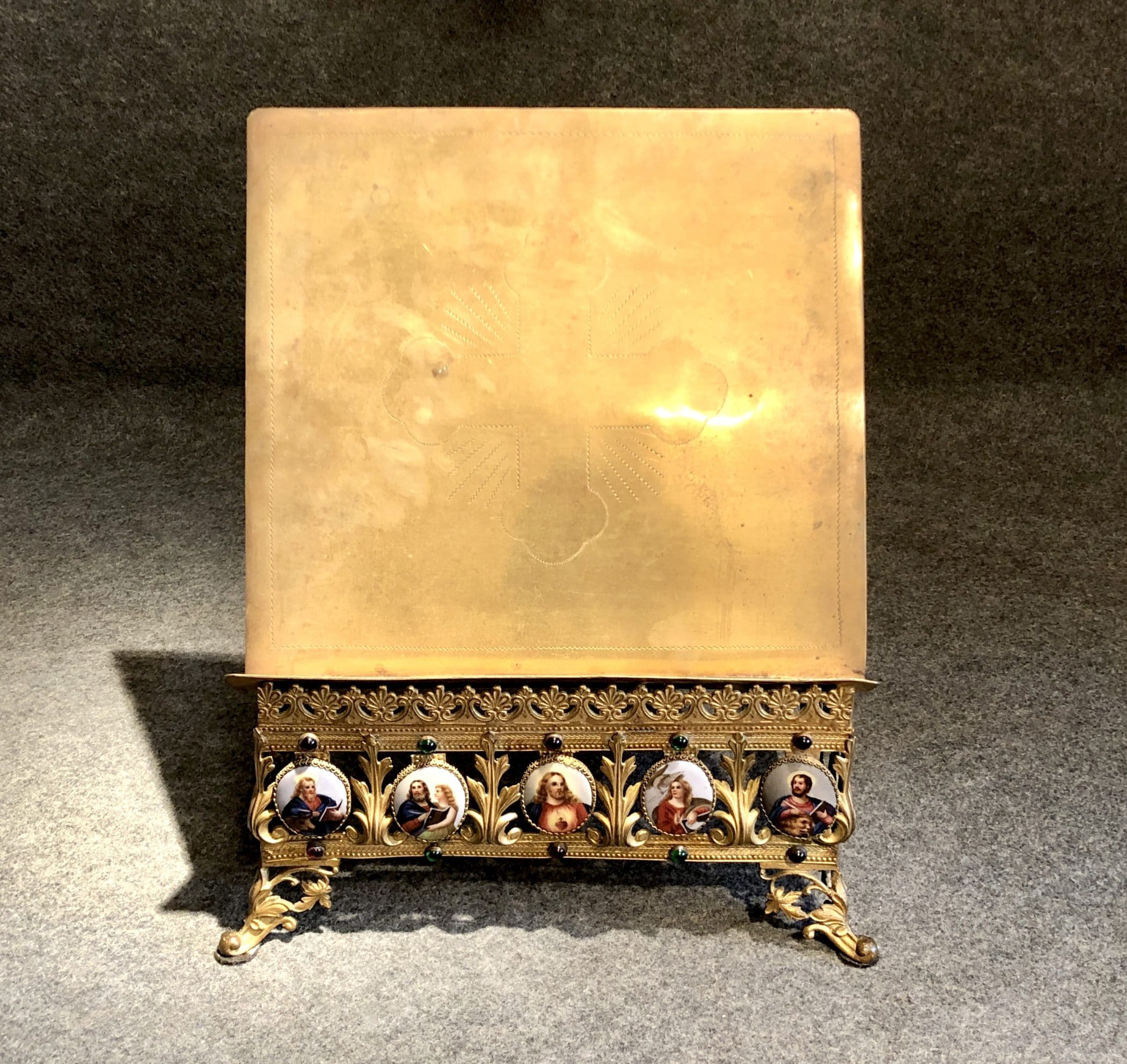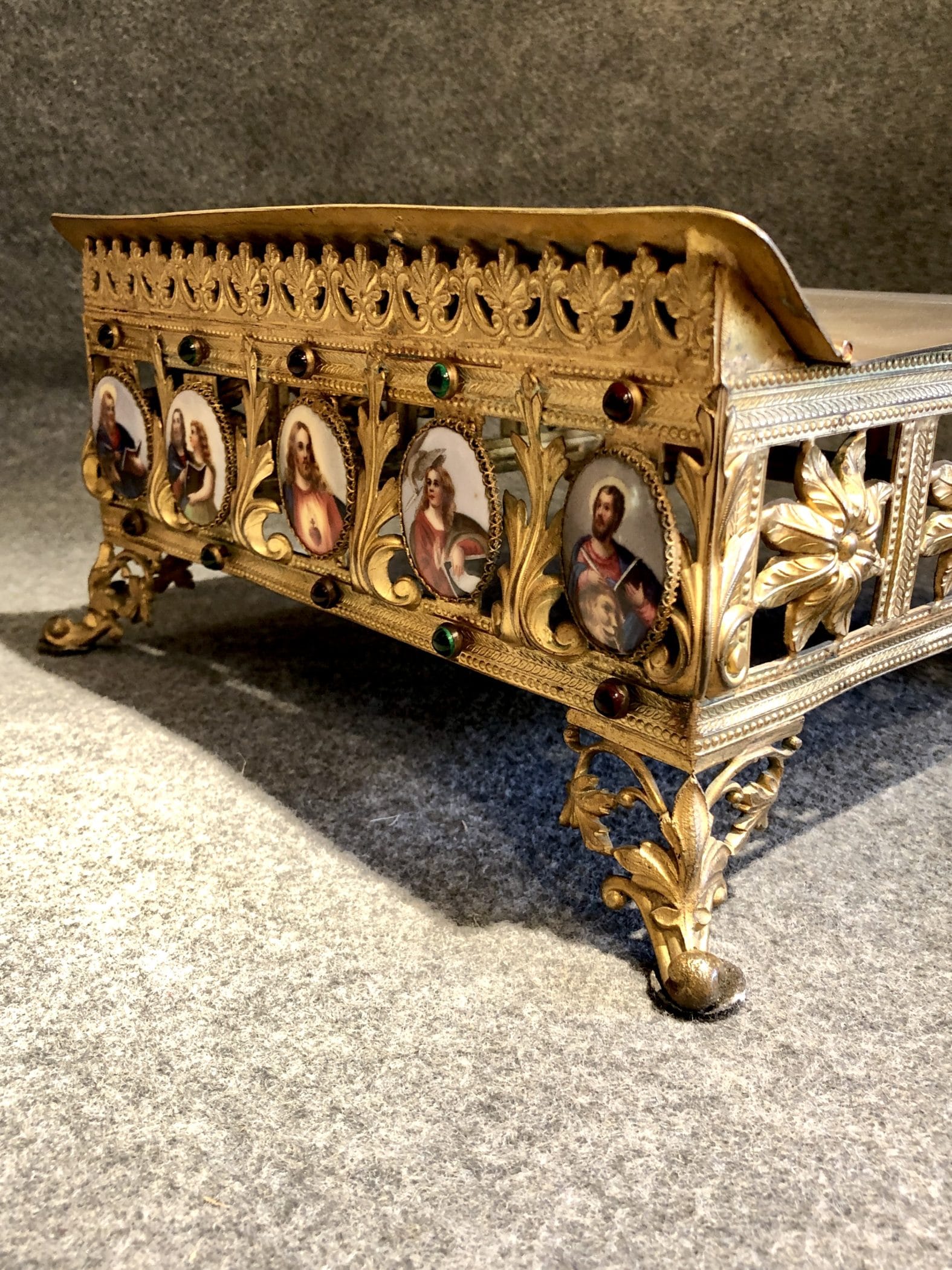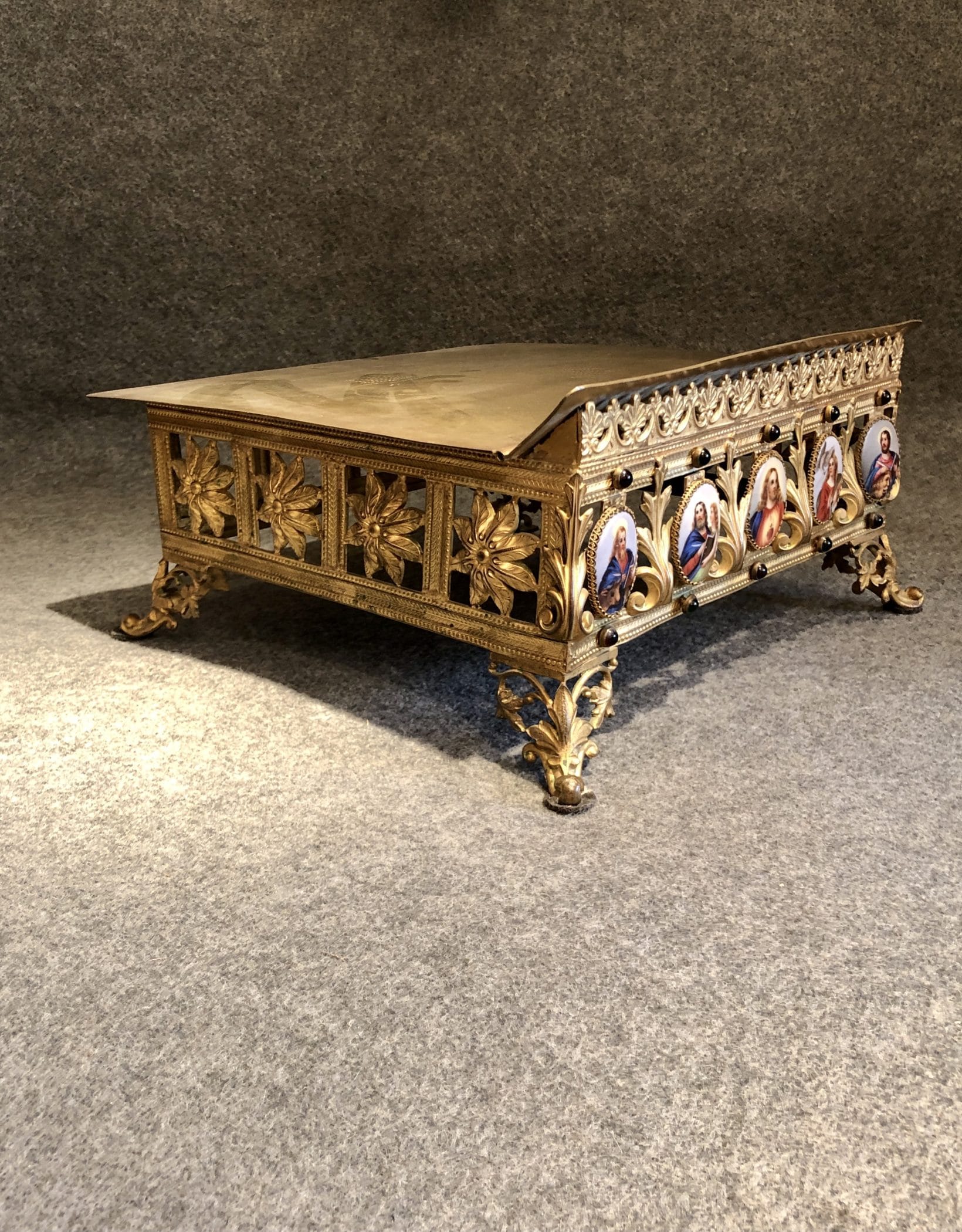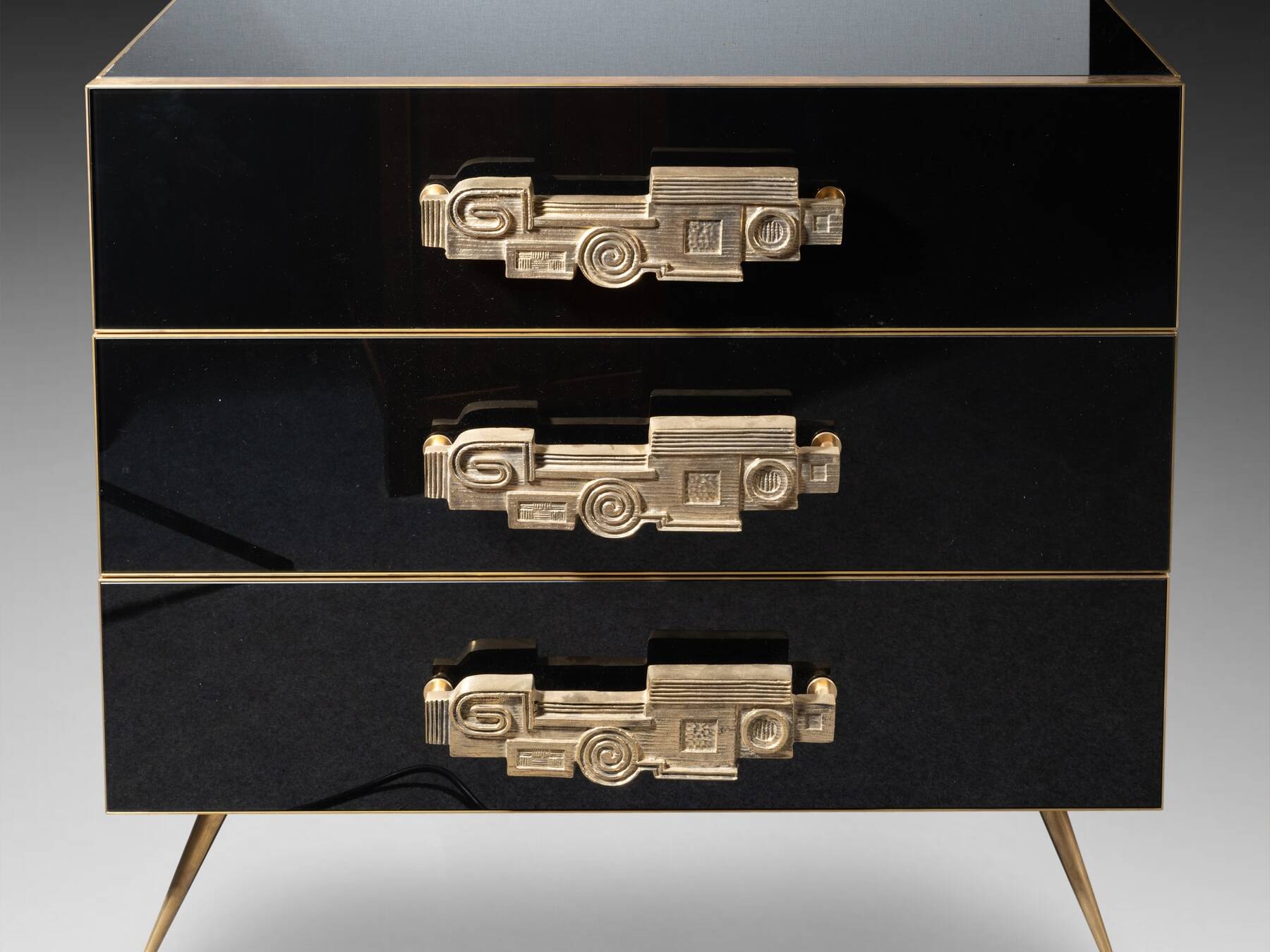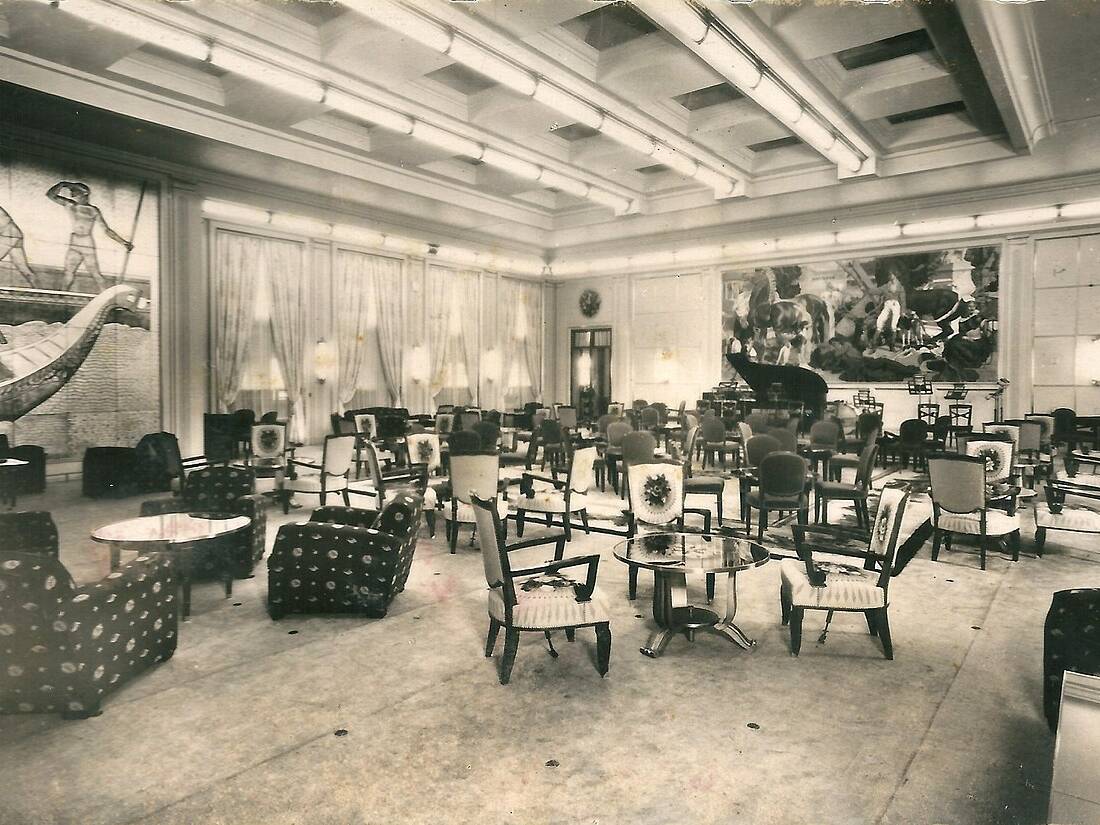Lecterns: from the Church to the Music Room
Sometimes to be referred to as a stand, the term lectern is preferred here. Of course, both objects allow the reading of sacred books, but in churches, the lectern is almost always fixed and placed in the middle of the choir.
Thus, the lectern is reserved for the reading of the choral books.
In order not to tire the reader, a large chandelier is often placed next to the lectern to illuminate the text. This particular arrangement encouraged the use of light-reflecting materials – such as gilded bronze here – in the design of these supports, thus highlighting the book they supported.
The first lecterns apparently appeared in France in the 7th century. Initially made of wood, bronze or gilded copper, they are often very ornate but fell into oblivion for several centuries before the craze for liturgical objects was revived in the 19th century.
This craze follows the promotion of the french national heritage initiated by Prosper Mérimée (1803 – 1870) during the first half of the 19th century. His longstanding friendship with Empress Eugenie (1826 – 1920) echoed his work in the upper social spheres, and it was thus that private individuals turned to antique furniture and objects, raising their profile in the eyes of all while diverting them from their primary function. Thus, one saw lecterns being used daily as a support for music scores.
The lecterns of the second half of the 19th century regularly display pretty gilded bronze lace with painted enamels and glass cabochons. The motifs of acanthus leaves and rosaries of pearls are frequent. This rich and colourful decoration is a direct reference to the Gothic style at a time when eclecticism was a particularly appreciated aesthetic.
Holy figures figure prominently; the 19th century was not short of pious figures or martyrs, and the revival of the cult would pass through ancient, medieval or contemporary figures with a rapidly abundant iconography. Think of Blandine, Joan of Arc or Bernadette Soubirou.
Here we recognize the evangelists: Luke and his bull, Matthew and an angel, John and the eagle and Mark and the lion. At the centre are Jesus Christ and the Sacred Heart, symbol of the divine love by which the Son of God took human form and gave his life for mankind.
The Revival of Religious Objects
For a long time discredited, these 19th century objects that were scornfully called “Saint Sulpicians” are now being rediscovered in the light of a revaluation of this century, which saw both the Empire and the Industrial Revolution.
The creation of these religious art objects is indeed far from being devoid of a real aesthetic approach. Studies of these creations tend to confirm the existence of a genuine artistic research closely linked to religious history. Let us recall that at the end of the Revolution, the Catholic Church found itself in difficulty and rebuilt itself slowly, which did not prevent it from fighting towards the end of the century against a notable weakening of religious sentiment.
Its struggle is thus embodied in the image – and the images – that it wishes to convey to its faithful and especially to those who have strayed from the Church. For this, the decorative arts are essential.
In parallel with Prosper Mérimée’s work to promote and raise awareness of the national heritage, Christian art regained its letters of nobility by relying on the admiration of the bourgeois and aristocratic elites for the old styles, particularly Gothic art.
Religious art objects in the Gothic style were then produced in the Saint-Sulpice district – hence their nickname of Saint-Sulpicians.
This production makes it possible to replace or compensate for the lack of furniture and liturgical objects in churches. The return to the medieval style of the twelfth and thirteenth centuries also signs – or so it is hoped – the return to original purity, to a Church united and gathered around the Pope. The primitivism of the Neo-Gothic reflects the Church’s ambition to heal the religious, national, political and social tears of the 19th century. Vast program.
St. Sulpician objects from the 19th century
This sudden appeal and the democratisation of neo-Gothic taste through large-scale production benefited a newcomer to everyday life: the catalogue.
Already in the 19th century, the catalogue (which differs almost in no way from the one we know today) presented the various objects and furniture by categories of use. It also allowed the potential buyer to choose among different qualities of finishes and materials, different styles (Romanesque, Gothic or Renaissance style).
This new way of acquiring works of art benefited in particular Auguste Napoléon Didron (1806 – 1867), a French archaeologist but also a journalist, editor and specialist in the iconography of the Christian Middle Ages, who quickly understood the interest of offering factories and the clergy models that conformed to archaeological requirements at prices made affordable by the techniques of industry.
Faced with a massive demand for liturgical objects in different materials, styles and qualities, Didron initiated an artistic creation that was very respectful and faithful to his models, an attention that was naturally appreciated by the clergy and the bourgeois and aristocratic classes who were very fond of the neo-gothic style.
Following Didron, many Christian art factories appeared in all areas of the sacred arts. There are 250 catalogues of religious furniture and objects of art published during the 19th and early 20th centuries.
Our lectern is undoubtedly an object that would have been appreciated, if not drawn by Auguste Napoleon Didron. A true artistic creation of the 19th century, it is entirely imbued with this neo-gothic taste inspired by the work of Mérimée: the gem-like cabochons of the religious shrines capture the light and direct the eye towards the painted enamel medallions illustrating the founding characters of the Christian cult. This elegant “return to the sources” draws on noble materials without having the pretension of the too precious and ostentatious liturgical objects of the 18th century. And this is precisely what the clergy is looking for: the thrifty profusion capable of preserving the luxurious impression appropriate to the celebration of God.
“From the scholarly definition of the purest archaeological and aesthetic types to industrial production through the stages of costly experimentation and luxury, the neo-Gothic knew the greatness and misery of the dream for all” concludes Jean-Michel Leniaud in a very comprehensive article on neo-Gothic art.
Today, the new appeal of this style is above all oriented towards quality parts, often the only ones perfectly preserved thanks to top-of-the-range materials and careful manufacturing techniques.
Marielle Brie
Art Historian for Art Market and Cultural Media
Author of the blog Objets d’Art et d’Histoire
Autres ressources et documentations
28 June 2025
Plaster Sculptures, Plaster Casts
For a long time, plaster casts suffered from a poor reputation. Often regarded as crude replicas, and sometimes even dismissed as inexpensive imitations, they nonetheless had…
17 April 2025
The Middle-Ages Furniture
Rare and highly sought-after, Middle-Ages furniture is making a strong comeback. An overview of this market, where enlisting the guidance of a professional is strongly advisable.
18 March 2025
Murano Glass Furniture
Since the beginning of the 20th century, Murano glassmakers have been exploring new horizons. After classic lighting and decorative art, Murano glass is now used to adorn…
16 December 2024
A bronze triton after the sculptures of François Girardon (1628 – 1715) in Versailles
This fountain element is all the more admirable as it is sculpted after the masterpieces of the Pyramid Basin, on the parterre of the North Wing of the Versailles gardens.
18 November 2024
Tyco Bookcase, by Manfredo Massironi, for Nikol International
A pure creation of optical art research in the 1960s, the Tyco library shelf designed by Manfredo Massironi invites the viewer to bring the work of art to life on a daily basis.
3 August 2024
The Ocean Liner Style
In the 20th century, the immense ocean liners connecting the Old Continent and the New World were ambassadors of tastes and innovations on both sides of the Atlantic.

